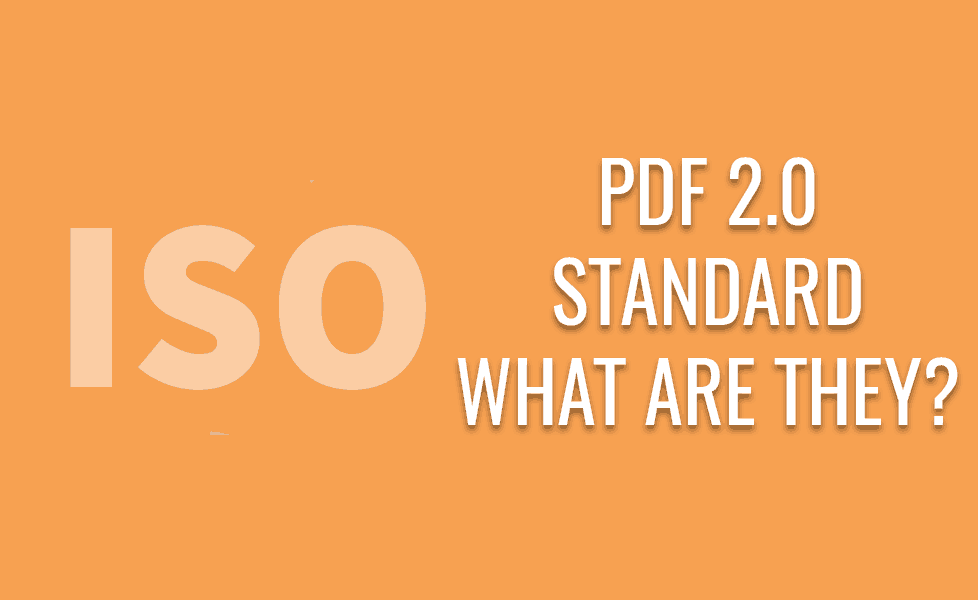PDF 2.0 Standards: What Are They?

PDF began as a creation which aimed to present documents, and all manner of media (image, video, etc.) independent of the application, software, hardware, and operating systems being used by the end user. In 2008 it became an ISO standard for the whole industry, making the technology accessible to the public through many more companies in a regulated way. Now PDF vendors could more easily market compliant software to end users. Included in the working group to achieve this were members of Foxit’s team, most notably Carsten Heiermann and Thomas Zellmann. The first ISO version of the specification, ISO 32000-1 is equivalent to the PDF 1.7 specification from Adobe. Released in a short space of time, there were many elements left out or not explored in full, making the standard open to interpretation.
The new PDF 2.0 specification was developed over 8 years of research, between 40 technical experts from 20 different countries. This specification has led to the dream of being able to move paper documents into the digital age in a smooth and consistent manner becoming a closer reality. Many parts of the new standard have been completely rewritten to make each topic as transparent as possible without any ambiguity.
“A PDF 2.0 file has a better chance of working the same way with different software, compared to a PDF prepared according to an earlier version of the PDF standard.”
New PDF 2.0 Features
The latest PDF specification introduces features that, up until now, are only partially supported by various PDF technology providers, or just are not available with previous versions of the PDF standard. We have incorporated these new features in our newly released Foxit PDF SDK:
- Unencrypted wrapper documents: An unencrypted wrapper document provides for situations where a PDF viewer might not be capable of decrypting content within a document. In this instance, a document may have an unencrypted wrapper document which provides all the necessary details to the user for them to decide whether it will be possible to decrypt the payload. This will enable PDF viewers to handle decryption more efficiently, allowing authorized users to view content when they need to while protecting content from unauthorized access. Foxit PDF SDK allows you to get all the available information about the encryption type of the PDF file, e.g. password, certificate, DRM, RMS, CDRM or any other custom type.
- Associated files: This opens documents up to do more programmatically as it provides files or machine-readable metadata that contain reference information relating to a PDF. With Foxit PDF SDK you can associate a file with annotations, a page, graphic object, image graphic object or XObject. You can have full control over information within a document.
- AES-256 encryption: 256-bit encryption is used across the internet and is considered among the highest and more modern security for documents. PDF 2.0 makes it a feature ensuring top security for PDF documents. You can use 256-bit encryption on all our platforms keeping your document safe and secure even after sharing them.
There are also tagged PDF improvements such as Math Markup Language (MML), pronunciation hints (for those hard of hearing, etc.), accessibility features (page readers, etc) and easier conversion to HTML.
Even if a company doesn’t plan to use these features directly, new PDF documents will make use of these features. If businesses share many PDF documents amongst themselves, it is possible that some, if not all, of these features will be present due to the different ways people use files. Therefore, it is crucial for companies to upgrade their software so that files with these features can be handled correctly.
Deprecated features
For the first time in the history of PDF, specific elements have been removed from the PDF specification. Things like RC4 encryption and the document information dictionary have been removed. This allows PDF software developers to provide better software, capable of supporting the entire PDF specification.
In summary PDF 2.0 is paving the way for a document management system that is future focused and in line with the everyday uses of PDF files. It highlights the technological advances over the past 8 years and aims to support as many of them as possible. Companies around the world need to embrace the specification to help move the industry away from these older features that caused many issues and incompatible files, and into a bright future where PDF technology can flourish within organizations.
Our newly released multi-platform SDK with high-performance libraries includes these features to help businesses who use our technology stay up-to-date with PDF standards.